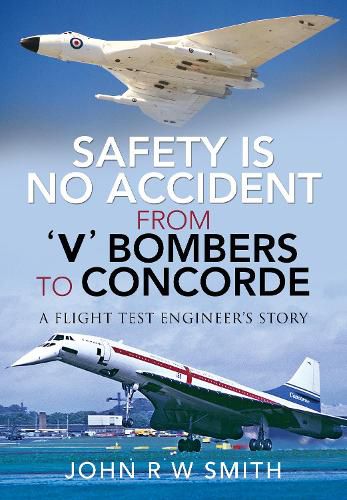Readings Newsletter
Become a Readings Member to make your shopping experience even easier.
Sign in or sign up for free!
You’re not far away from qualifying for FREE standard shipping within Australia
You’ve qualified for FREE standard shipping within Australia
The cart is loading…






Flying, as everyone knows, is generally regarded as the safest means of transportation. Yet for that to be the case an enormous amount of testing is undertaken. Central to this, of course, are the test pilots, who fly the aircraft, but it is the men behind the scenes who deal with the technical aspects of the aircraft - the flight test observers and engineers. Numerous books have been written by Test Pilots, but few, if any, from the perspective of an Aeronautical Engineer working as Flight Test Observer/Engineer in partnership with the Test Pilot. This book is an account of the author’s flight-testing career, from the 1960s to early 1980s, at Avro and the Civil Aviation Authority (CAA). During the author’s time at Avro, he flew on the development and certification test flights of the Avro 748, 748MF, Shackletons, Nimrod and Handley-Page Victor tanker. In the CAA, his role turned to regulation, making flight test assessments of manufacturer’s prototypes and production aircraft, to check compliance with the CAA’s flight safety requirements. The scope ranged from single-engine light aircraft to large civil transport aircraft. It involved frequent visits to foreign manufacturers and also included his participation in the CAA’s Concorde certification flight test programme. Flight testing involves risk. Advancements in the understanding of aerodynamics and an increasingly professional approach to risk management improved safety, but it would never be risk-free. Several of the author’s close friends and colleagues died in flight test accidents during this period of rapid aeronautical development; all on civil aircraft types. It is because of such people that the millions of flights undertaken each year are trouble-free. AUTHOR: John R.W. Smith obtained an honours degree in Aeronautical Engineering from Bristol University in 1962. Having completed his apprenticeship, he joined Avro in 1963 as an Aerodynamicist in the Flight Development Department and, alongside this task, became a Flight Test Observer in 1964. His professional expertise expanded from aerodynamics to automatic flight control systems and navigation systems. During that time, he flew frequently with Tony Blackman who was Avro’s Chief Test Pilot.
98 b/w illustrations
$9.00 standard shipping within Australia
FREE standard shipping within Australia for orders over $100.00
Express & International shipping calculated at checkout
Flying, as everyone knows, is generally regarded as the safest means of transportation. Yet for that to be the case an enormous amount of testing is undertaken. Central to this, of course, are the test pilots, who fly the aircraft, but it is the men behind the scenes who deal with the technical aspects of the aircraft - the flight test observers and engineers. Numerous books have been written by Test Pilots, but few, if any, from the perspective of an Aeronautical Engineer working as Flight Test Observer/Engineer in partnership with the Test Pilot. This book is an account of the author’s flight-testing career, from the 1960s to early 1980s, at Avro and the Civil Aviation Authority (CAA). During the author’s time at Avro, he flew on the development and certification test flights of the Avro 748, 748MF, Shackletons, Nimrod and Handley-Page Victor tanker. In the CAA, his role turned to regulation, making flight test assessments of manufacturer’s prototypes and production aircraft, to check compliance with the CAA’s flight safety requirements. The scope ranged from single-engine light aircraft to large civil transport aircraft. It involved frequent visits to foreign manufacturers and also included his participation in the CAA’s Concorde certification flight test programme. Flight testing involves risk. Advancements in the understanding of aerodynamics and an increasingly professional approach to risk management improved safety, but it would never be risk-free. Several of the author’s close friends and colleagues died in flight test accidents during this period of rapid aeronautical development; all on civil aircraft types. It is because of such people that the millions of flights undertaken each year are trouble-free. AUTHOR: John R.W. Smith obtained an honours degree in Aeronautical Engineering from Bristol University in 1962. Having completed his apprenticeship, he joined Avro in 1963 as an Aerodynamicist in the Flight Development Department and, alongside this task, became a Flight Test Observer in 1964. His professional expertise expanded from aerodynamics to automatic flight control systems and navigation systems. During that time, he flew frequently with Tony Blackman who was Avro’s Chief Test Pilot.
98 b/w illustrations